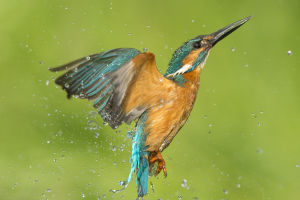Swallows are birds that are known for their excellent flying skills. They are capable of feeding in the air, which makes them excellent survivors. Swallows' nests are strategically placed, with some birds building new nests each year, while others can reuse their nests for over a decade if no disasters occur.
Swallows are highly beneficial for humans, mainly because they feed on insects like mosquitoes and flies. A single swallow can consume more than 500,000 pests in one summer, thereby protecting crops. This close relationship between swallows and humans is why in China, the presence of swallows nesting under the eaves of a house is considered a symbol of good luck by the landlord.
The swallow is a small bird, with a body length of about one meter and a short, scissor-shaped tail. This tail allows for quick changes in flight direction. During the flight, the swallow often faces obstructions, but its streamlined tail minimizes resistance. The tail also helps balance the body in flight, regulate speed, and control landings and takeoffs.
Each species of swallow builds a different kind of nest. For example, the house swiftlet builds its nest on the eaves and beams, in the shape of a half-bowl. Each nest can hold 3 to 15 eggs. On the other hand, the nests of the swiftlets are more advanced and are built in the corner of the roof and walls.
Swallows nest under the eaves of human houses to protect themselves from predators like snakes. In the wild, swallows usually nest on cliff walls, but snakes are one of the biggest threats. If they nest under human eaves, they are protected from snakes as humans will kill them if they see them.
There are three main types of swallows - house swallows, golden-rumped swallows, and hairy-footed swallows - all of which are beneficial and have important research value. They are small and light, with narrow and pointed wings, concave tails, and short beaks, and they feed on flies and other pests.
The most active season for house swallows is from April to July when they breed. They fly in pairs, either soaring in the sky or perching under the eaves of houses, emitting their crisp and melodious calls.
Swallows migrate to the southern hemisphere during the winter, but this migration is not without danger. Many swallows die during migration due to physical exhaustion, particularly when they cross vast deserts and seas. They also face the danger of strong birds and attacks from humans along the way.
Swallows are not only beneficial for humans but also have a close relationship with them.
The presence of swallows nesting under the eaves of a house is considered a symbol of good luck in some cultures, and the migration of swallows to the southern hemisphere is a testament to their resilience and determination.


